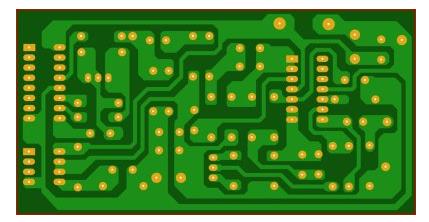Circuit board manufacturers, fluxes for lead-free wave soldering of circuit boards
The main function of the flux (F1uX) in circuit board soldering is that the activator (Activator) generates organic acid activity at high temperatures, and removes the oxides on the surface of the members to be soldered, so that the pure tin in the solder and the base The chemical reaction of the metal and the IMC are also called solid soldering.
In recent decades, in the soldering process of electronic products, rosin resin fluxes mainly composed of rosin, resin, halide-containing activators, additives and organic solvents are generally used. This type of flux can be soldered. Good performance, low cost, but high residues after welding. The residues contain halogen ions, which will gradually cause problems such as electrical insulation degradation and short circuits. To solve this problem, the rosin resin system on the electronic printed board must be assisted. Flux residues are cleaned. This will not only increase production costs, but the cleaning agent for cleaning rosin resin flux residues is mainly fluorochloro compound. This compound is a depletion substance of the atmospheric ozone layer, which is banned and eliminated. Still. The process used by many companies belongs to the aforementioned process of using rosin tree finger-based flux solder and then cleaning it with a cleaning agent, which is low in efficiency and high in cost.

1. Orthodox flux:
The wettability of various lead-free solders is not as good as that of 63/37 leaded ones. It is well known that it is the flux product for lead-free wave soldering, and its activity at high temperature is certain. It must be strong enough to help remove the oxides on the surface of the members. In addition, it must be kept unbreakable for at least 4 to 5 seconds in the intense heat of 270°C before it can be used for action.
2. Water-based flux
The most disturbing thing is that since 2007, perhaps EUY. To put forward another VOC Free for electronic and electrical products, the professional instruction of "Volatile Organic Compounds" (Volatile Organic Compounds) is prohibited. If this is the case, the production line will inevitably eliminate all solvents and enter the realm of some water-soluble fluxes. The shortcomings of this water-based flux and the ones to be improved are as follows:
1. When the temperature is too low, it will freeze, and the surface tension is much higher than that of organic solvents, resulting in poor wetting effect.
2. The preheating section needs more heat to drive away the water, and the rust-removed ones are easy to rust back again.
3. A combination of fluxing machines with stronger spraying performance and better performance is needed. Only in the small water point and the solid cone-shaped spray water mist, can the coating amount be 2-3 times more and be pushed into the small hole Inside or on top of it. Annular surface.
Once water-based flux must be adopted, the overall wave soldering unit connection has to be changed drastically. For example: changing from foaming type to spraying type coating, preheating also needs to be strengthened, of course, this will inevitably increase the scum. After wave soldering with high-energy water-based flux, it must be thoroughly washed before shipment. Generally, water-based fluxes can be divided into two types: organic and inorganic. Among them, the active agent is more active than the RA type, and a wetting agent is added to facilitate access to dead corners and small holes. After the wave soldering is completed, the person must be thoroughly cleaned and passed the ion contamination test, so that the subsequent problems of electrochemical migration ECM will not occur.
Three, no-clean flux
The main feature of this type of product is that the solid content is very low, about 2-3% bywt, and after welding, it must pass the surface insulation resistance (SIR) test in the high temperature and high humidity ring before it can be considered as a pass. Generally, weak fluxes with insufficient activity must be matched with a nitrogen environment (the residual oxygen rate is preferably 1500ppm). In order to reduce the re-oxidation in the process, the wave soldering effect will be better in this way. Otherwise, the metal surface that has been activated will of course not be easy to weld when the available time is insufficient and the operating range is too narrow.
Due to strict restrictions on the solid content and corrosivity of the flux, its flux performance is bound to be limited. To obtain good welding quality, new requirements must be put forward for welding equipment-with inert gas protection. In addition to the above-mentioned measures, the no-clean process also requires stricter control of the various process parameters of the soldering process, including soldering temperature, soldering time, PCB soldering depth, and PCB transmission angle. The process parameters of the wave soldering equipment should be adjusted according to different types of no-clean fluxes to obtain a satisfactory no-clean soldering effect.